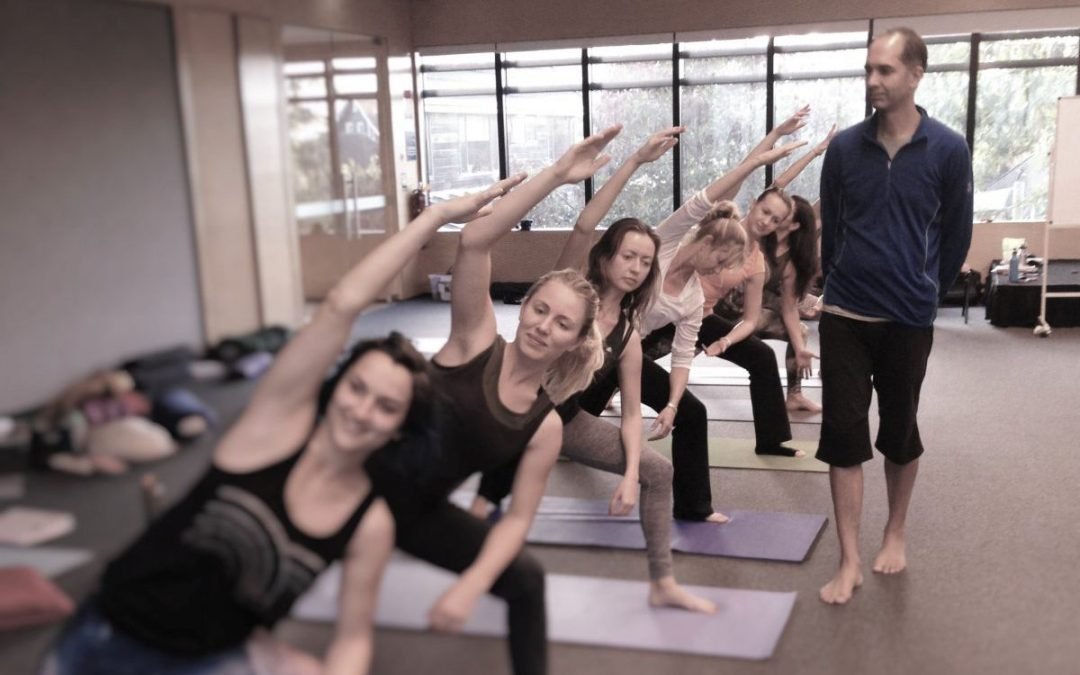Many of these tips and suggestions came from online sources (quoted at the end), and many also from my own experience. I hope you find these valuable.
- Make it your own
Be inspired by other teachers and their language and the way they use their voice, but ultimately, make the cues your own so that you feel truly comfortable with what you are teaching and that the language comes from your own experience. - Proprioceptive Empathy
Find your own way into what US yoga teacher Jason Bowman refers to as proprioceptive empathy—“To relate to students within one’s own body.” This means that from the depth of your own personal practice and from your experience of teaching and observing, feel what is going on for students, for the class, and let your language emerge from this place. - In this way you use Responsive Cues
– i.e. language arises from within you in response to what is happening in the class. - Support precedes movement
Allow for pauses so that students can find their ground, their support. - Breath
Consider breath support to be a cornerstone of your teaching and practice. Remind students about the intelligence of the breath. To honour and listen to the breath. To partner movement with the breath. - Use inquiry in your language
– open-ended questions so that there is some internal process and working things out with the students’ practice. This creates a class where there is true learning that may be applicable to each individual. - Language is informed by your class theme
There is no one fixed way to cue a posture or series of postures or a movement. Remember that you can use a theme for the class – a theme creates a container for the session. The possibilities of different themes are endless of course. The same class sequence may have very different cuing depending upon what the theme is. For example, Sun Salutations from a fluid perspective or from a breath perspective. Or Sun Salutations with moving from your centre. The cues will be different depending on the theme. - Learn to be creative
Give your self permission to be creative. In the moment. Try new words and phrases out – if they work, great – add them to your teaching vocabulary. If not, great – you know not to use them.
and more …
For the full list of cueing tips, subscribe to our mailing list for news, trainings, classes and workshops:
"*" indicates required fields |
Many of these 20 tips came from my personal experience of teaching, and also from these useful online resources. Do go check them out for further ideas on how to cue effectively.
Also, check out this
I hope you have enjoyed these tips and find them valuable. Feel welcome to be in contact if you have any questions or comments.
Neal Ghoshal
info@sacredmoves.com
sacredmoves.com

